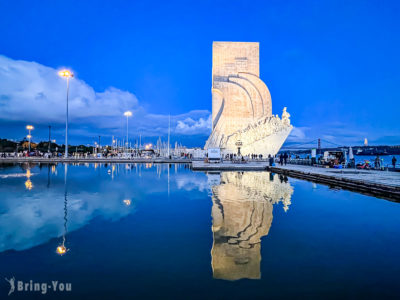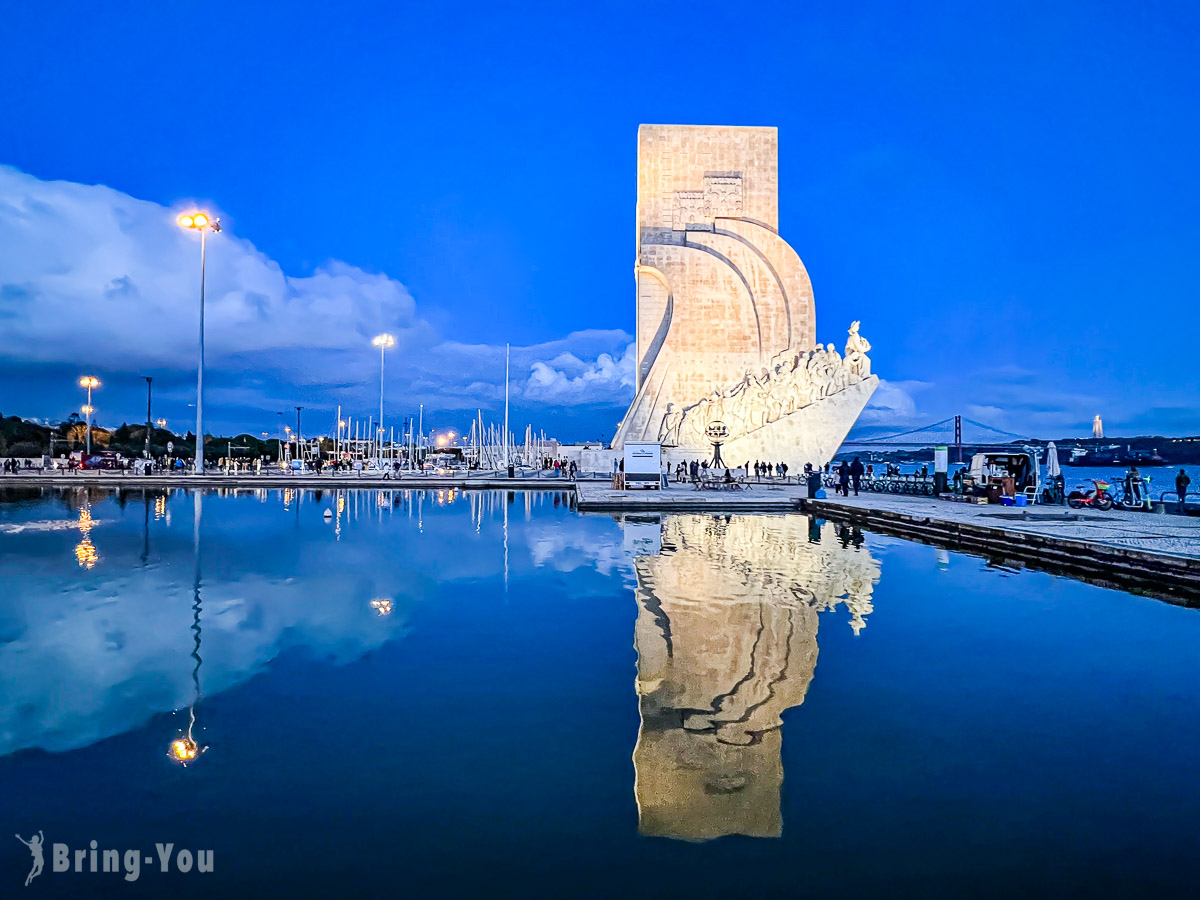Close to Lisbon and rich in history, the Belem District guarantees an insightful getaway for history buffs. Right here, Vasco da Gama and Henry the Navigator set out to the ocean, marking a new chapter in the history of Portugal and setting the stage for the modern world.
The best things to do in Belém are centered around churches and monuments, where marvelous architecture and historical milestones make a statement.
You can easily get here by bus and tram at an affordable fare covered by Viva Viagem Card on public transport. Even better, a Lisbon Card will come in handy to save you some bucks for attractions.
This article reveals the best things to see and do in Belem for half a day, mapped out in a sample itinerary.
Read More: 15 Things to Do in Portugal: Historical Buildings, Culture, Islands, Food, Port Wine, and More
Lisbon To Belem By Bus
There are two bus lines to take you to Belem District.
Option 1: 40 minutes
- Departure Station: Pç. Figueira across Rossio Subway Station.
- Busline: #714
- Arival Station: Jerónimos Monastery across the Church of Santa Maria de Belem
Option 2: 20 minutes
- Departure Station: Cais do Sodre
- Busline: #728
- Arrival Station: Jerónimos Monastery across the Church of Santa Maria de Belem.
On your return trip, take the same buses. Alternatively, hail the bus #729 from Lg. Princesa to Algés and then switch to the 15E tram directly to Cais do Sodré Station in ten minutes.
All bus and tram tickets are eligible for the Viva Viagem Zapping Card.
A Sample Itinerary From Lisbon To Belem
Jerónimos Monastery
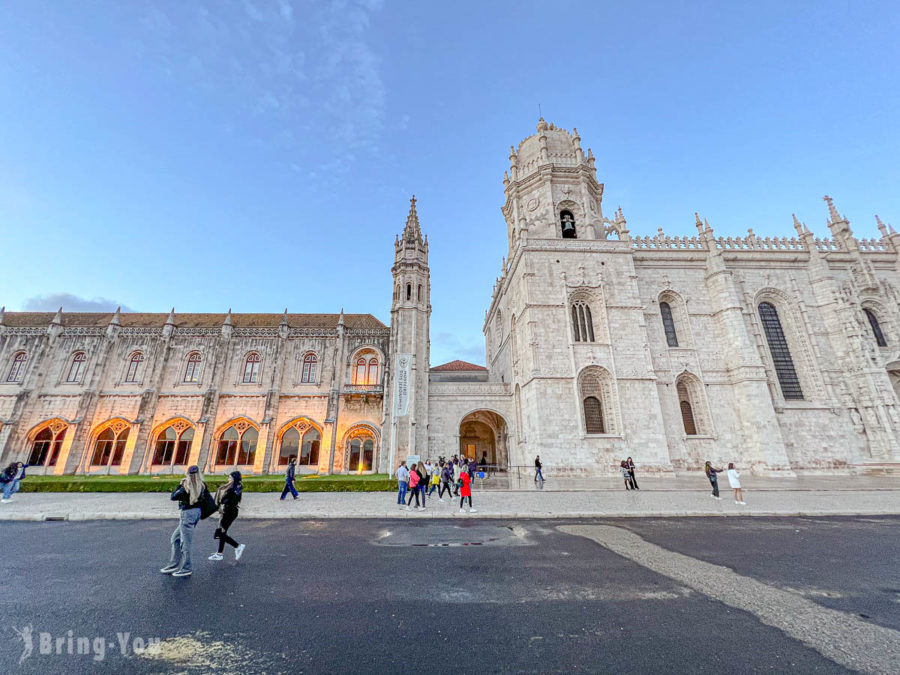
This is the first attraction welcoming you on arrival after you get off the bus from Lisbon.
The monastery is one of the most vivid examples of the Manueline architecture. This rich, lavishly adorned design began in the 16th century and continued to thrive under the reign of King Manuel I (1491-1521).

This was a golden era for Portuguese sailors to introduce themselves and the spirit of Portugal to the rest of the world. For that reason, you’ll be amazed at the naturalistic-symbolic reflection of the exuberance of shapes such as laurel branches, oak leaves, anchors, mermaids, and more.
Right here is the tomb of Vasco da Gama resting in peace, who inspired the construction of the building upon his return from India. Jerónimos Monastery was announced as a World Cultural Heritage by UNESCO in 1983. Today, you can visit the church at roughly EUR 9,99. Tickets can be bought on-site but are free of charge for Lisbon Card holders.
Church of Santa Maria de Belem
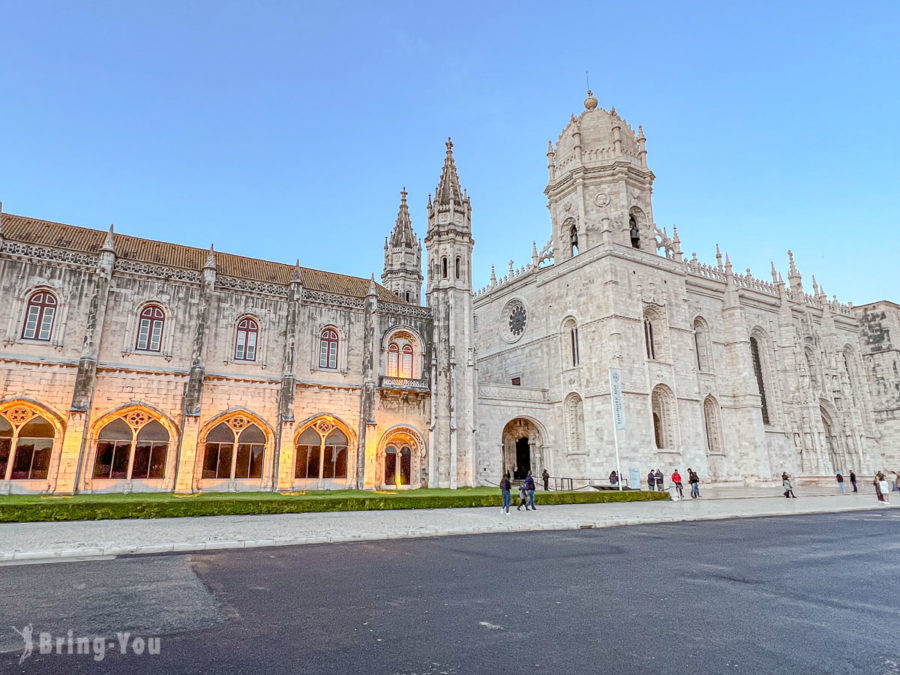
Just around the corner from R. dos Jerónimos Street, the Church of Santa Maria de Belém teams up with the Jerónimos Monastery to create a beautiful cluster of awe-inspiring architecture.
On any given sunny day, the parish draws a huge number of visitors flocking inside to contemplate the Manueline-style interior made of towering vaults and six exquisitely carved columns. The marvelous building has been going strong since the 16th century.
Thanks to the free entrance, it has become one of the most visited attractions in Belém. Despite the crowds, people put up clear signs to direct the traffic flow.
Right here, Vasco da Gama prayed his will to the Lord before setting out to the Cap of Good Hope in Africa and India.
Pastéis de Belém
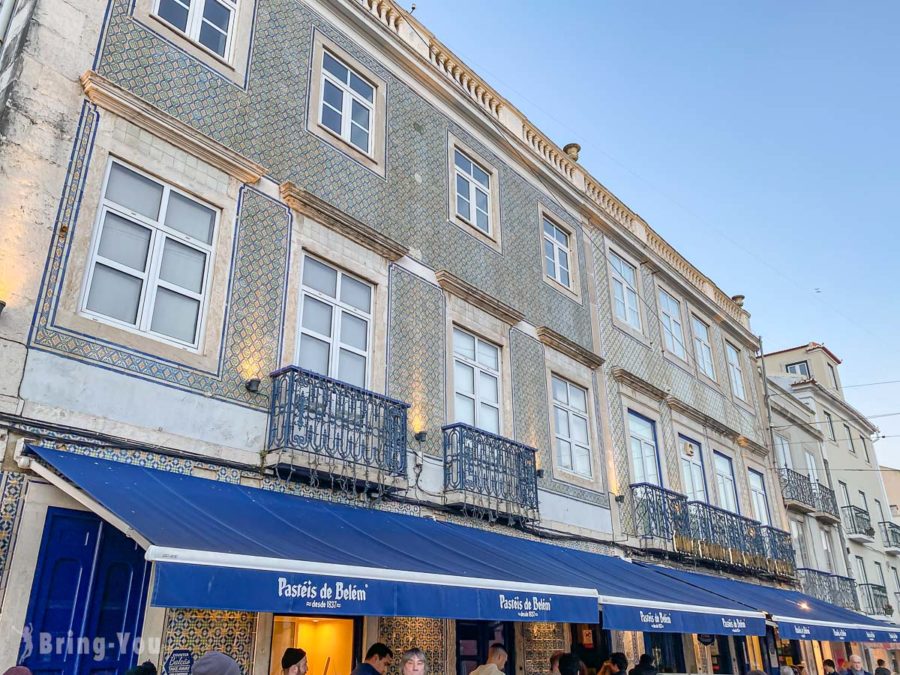
Just two minutes walking from the Church of Santa Maria, Pastéis de Belém is recognized as the home of the original egg tart in Portugal. The history of Pastéis de Belém is tied closely to the Jerónimos Monastery nearby.
Back in the day, egg white was widely used as a natural detergent for starching clothes of those monks and nuns working at the parish. Egg yolk, for that reason, went to waste.
To avoid such a wasteful approach, the nuns came up with a recipe to make full use of the yolk, hence the egg tart came around.
Shortly after, the nuns’ recipe became a big hook as their tart sold like hot cake in the early 18th century, captivating with a crispy puff pastry on the outside and a creamy, steaming hot filling on the inside.
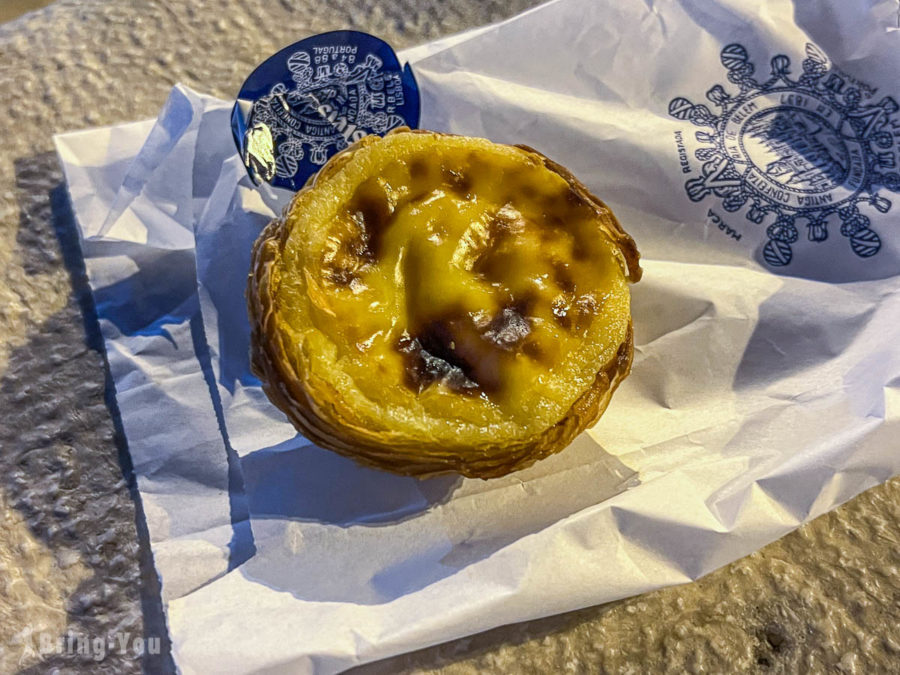
Despite the fame, Pastéis de Belém is consistent in their quality, drawing crowds from around the world to sample their famous traditional magic.
Big foodies keep praising Belém egg tart as the best of its kind in the world. What do you think?
Padrão Dos Descobrimentos – Monument Of The Discoveries

Right here, a new chapter was written with dignity in Portugal’s history book.

This 1940-built statue stands tall to commemorate 500 years since Henry the Navigator’s death. The majestic monument features the pride of Henry the Navigator, the renowned Portuguese explorer, and his crew of sailors on their life-changing voyage in the 15th century.
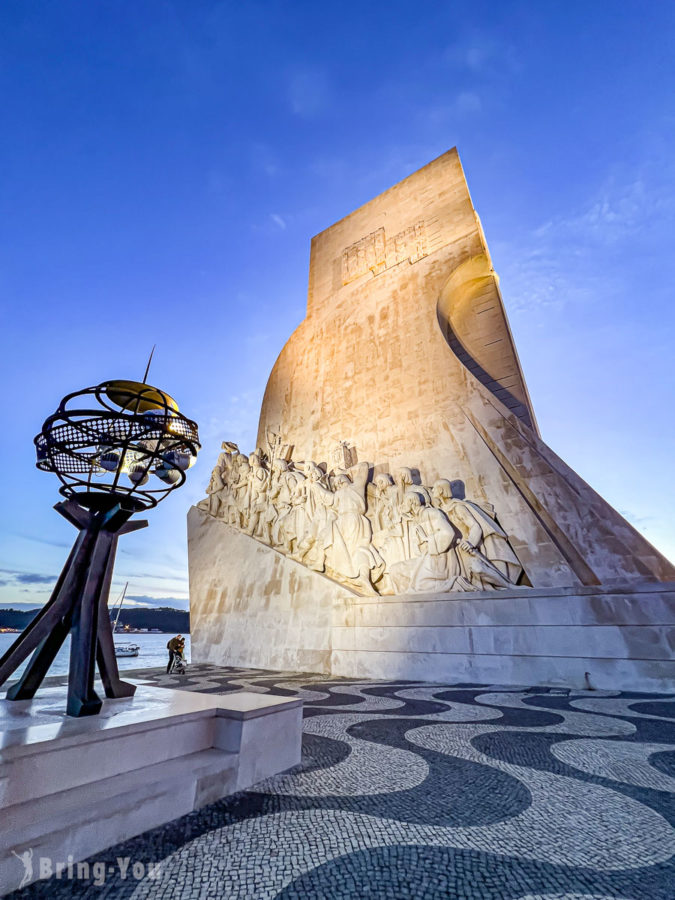

During this time, Portuguese explorers boldly ventured into the ocean to discover new trade routes and partners. They touched the sun-kissed lands of Africa, the deserted America, and other unknown places in Europe at the time, engaging in cultural exchanges and trade.
Ever since, they have successfully introduced Portuguese and European cultures to the “Newfound lands”, marking the start of global free trade, and empires, as well as the root of colonialism.
For the Portuguese, this period marked their maritime supremacy and a source of pride.
The monument is open for entrance at 10:00 AM at a fee which is EUR 10 or EUR 8.3 if you have a Lisboa Card.

Torre de Belém – Belém Tower
A 15-minute walk west of the Monument Of The Discoveries takes you to Belém Tower on a leisurely seaside stroll. This was once a defensive fortress of Porto, spanning several floors and facing the Tagus River.
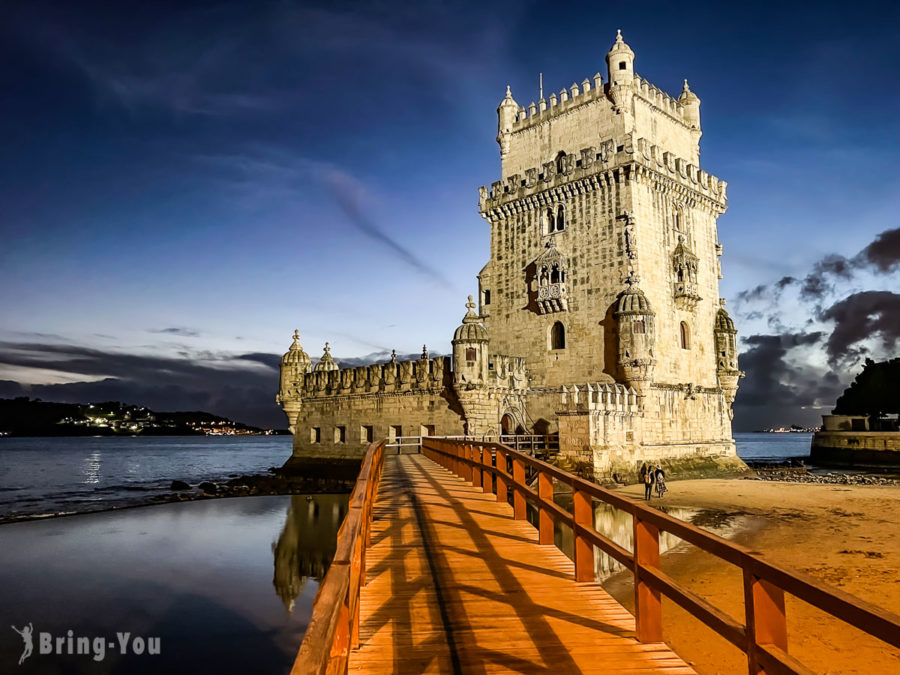
The construction started in 1514, taking six years to complete to pay tribute to Vasco da Gama and his famous global voyage and to safeguard the Belém District.
The tower comprises two parts: the barrier and the tower itself. The barrier on the outer layer of the fortress comprises 16 forts that stand behind a suspension bridge.
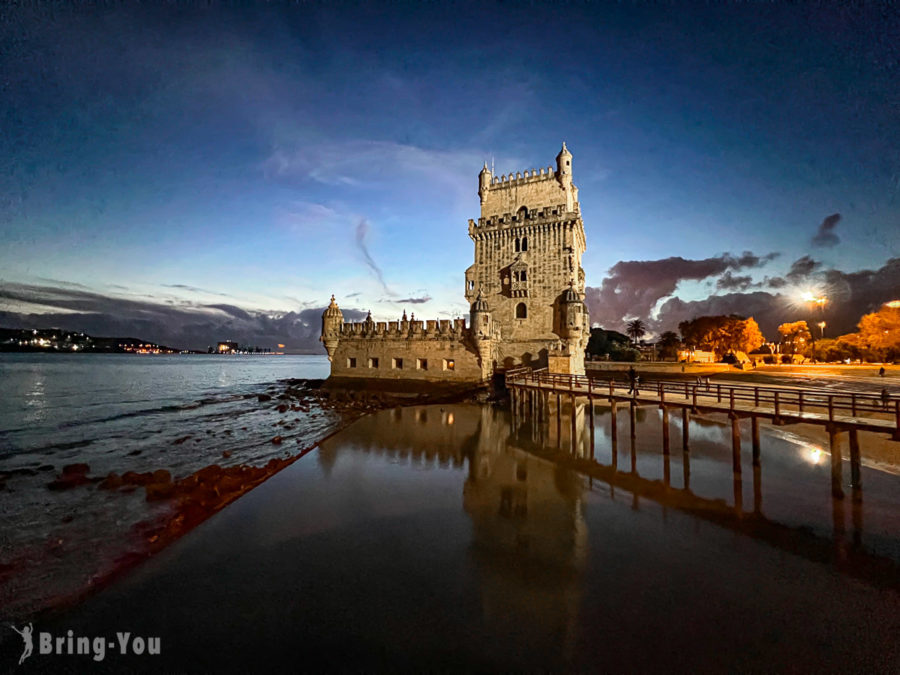
From there, you can access the tower through a narrow staircase that eventually takes you to an observation deck on top.
There is an entrance fee but it’s free of charge for Lisbon Card holders.
Final Words:
Your getaway to Belém can be finished within half a day if you’re not caught in the queues. Otherwise, expect to spend at least four hours of wait time since all of these attractions are extremely famous, especially the Monument Of The Discoveries.
The best time to visit Belém is from March to May or September to October when the heat is still bearable. Make sure to have your Viva Viagem Card and Lisbon Card ready to cut down wait time and save some bucks on the entrance fees.
Check out my travel guides in Portugal and rock your vacation in your own way!
